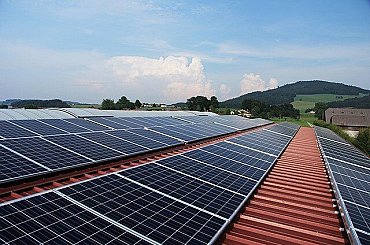Heterojunction solar cell based on indium tin oxide buffer layer achieves 25.36% efficiency
Researchers in China have sought to increase the efficiency of heterojunction solar cell through a buffer layer made of indium tin oxide. This innovation reportedly resulted in a 0.1% efficiency increase deriving from optimized short-circuit current density and fill factor.

You are not logged in
If you want to read more, join the ENERGY-HUB club
LoginTry the monthly membership in the ENERGY-HUB club for free!
Related articles
Multi-constraint modeling for agrivoltaics
Researchers at Cornell University in the U.S. have developed a novel optimization model for agrivoltaic site design and benefits,…
Scientists propose manufacturing process to build perovskite solar cells on the Moon
German scientists believe that power generation for future habitats on the moon could be achieved by manufacturing halide perovski…
How Trump’s widespread tariffs affect the U.S. solar industry
Tariffs of 10% are applied to most products from most countries, but energy and energy products, steel, and aluminum are exempt, a…
Getting More Out of the Battery with Simulations
Researchers at the Fraunhofer Institute for Industrial Mathematics ITWM are using innovative technologies to focus on battery beha…
BP Shutters Low-Carbon Mobility Unit, Refocusing on Traditional Energy Operations
BP has decided to disband its dedicated low-carbon mobility business development team as the company redirects its strategy toward…
ENERGY-HUB is a modern independent platformsharing news and analytic articles from the energy sector on a daily basis. Within our portfolio we monitor czech, slovak and foreign press releases.



